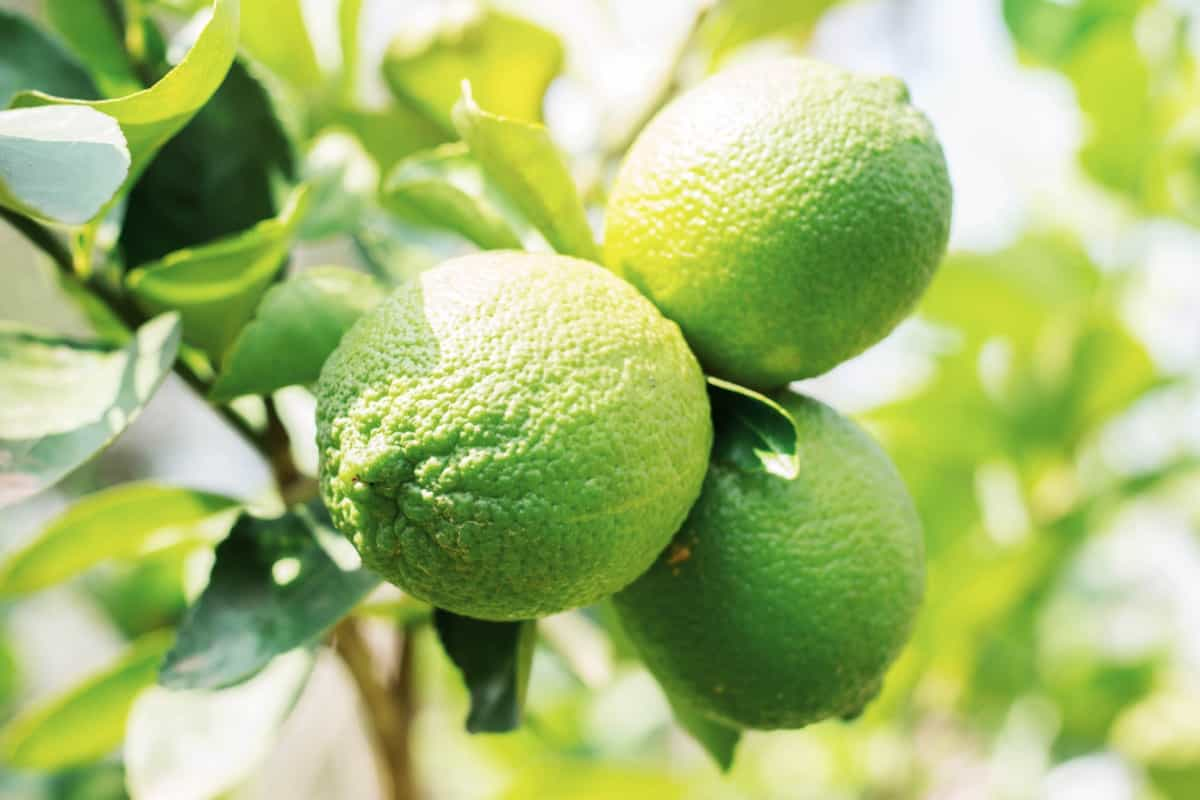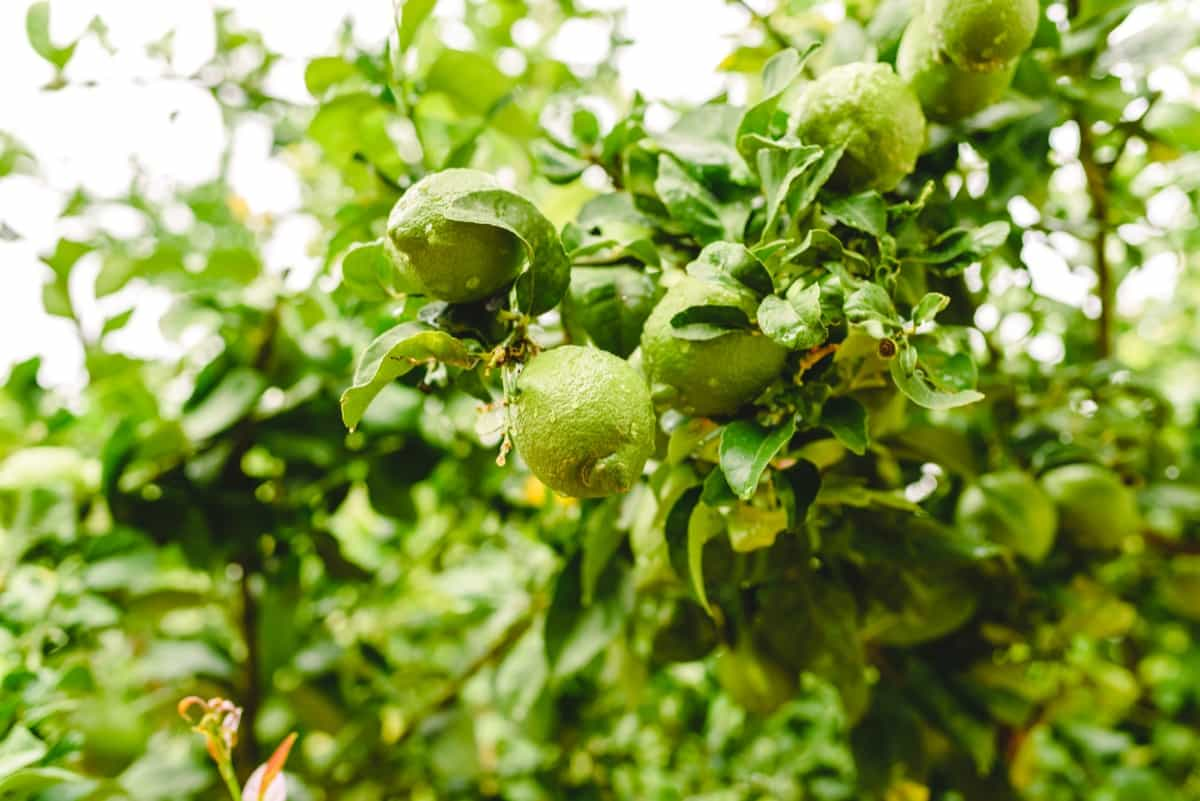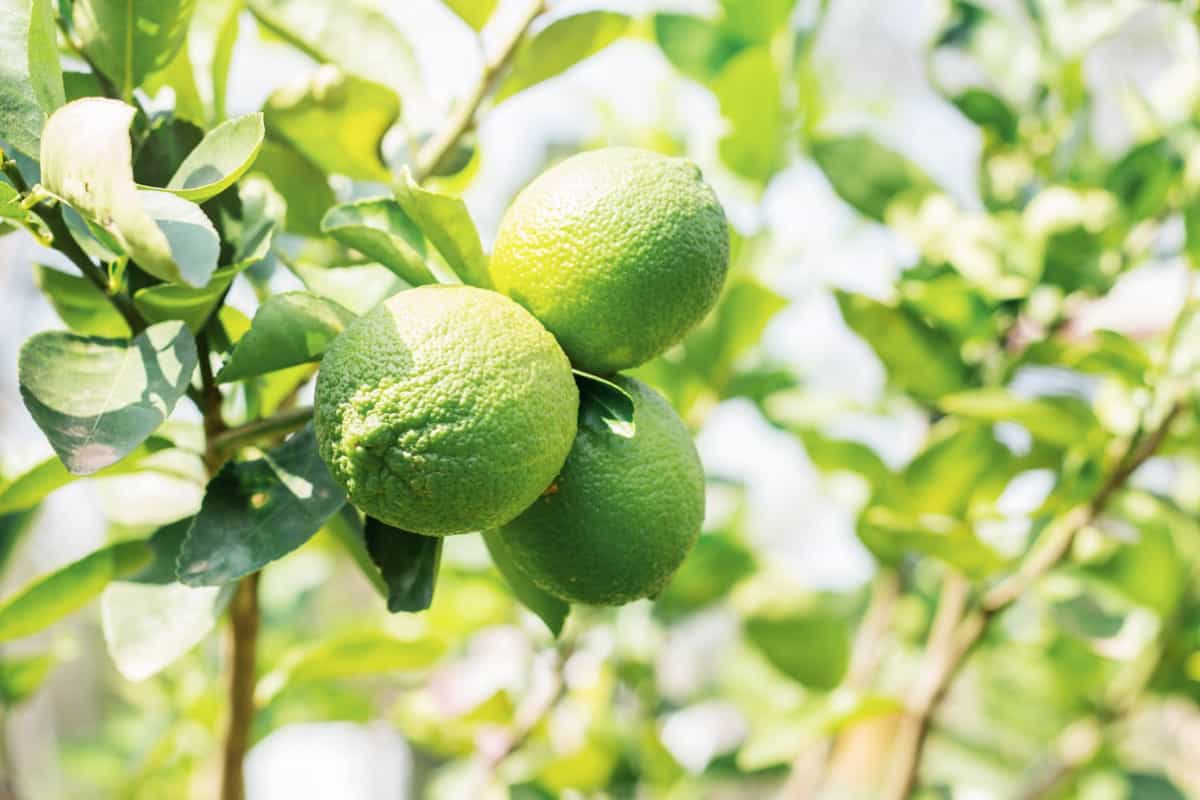Selecting the appropriate site for Kagzi Lemons is a crucial factor in successful gardening. When selecting the perfect location, keep in mind that Kagzi lemons prefer well-draining soil. They don’t like wet feet, so avoid areas prone to standing water or heavy clay soil. Sandy loam with good drainage will provide an ideal growing environment. Additionally, consider the microclimate of your garden.

Growing Kagzi Lemons
Selecting Healthy Kagzi Lemon Saplings
The quality and health of the sapling will determine how well it adapts to its new environment and how vigorously it grows. Start by looking for a reputable nursery or supplier that specializes in citrus trees. Look for saplings with vibrant green leaves and a strong, straight trunk. Avoid any plants with yellowing or wilting leaves, as this may be a sign of disease or poor health. Avoid plants with mushy or dark-colored roots, as these could indicate root rot or other issues.
Soil Preparation for Kagzi Lemon Trees
Ideal Soil Conditions for Maximum Growth
To create the perfect environment for your Kagzi lemon tree, start by testing the pH level of your soil. Ideally, it should be slightly acidic, with a range between 5.5 and 6.5. You can adjust the pH by adding amendments such as sulfur or dolomite lime. In addition to pH levels, proper drainage is essential for these lemon trees. They do not tolerate waterlogged conditions.
Amending Your Garden Soil for Lemon Trees
If your soil is heavy or clay-like, it may hinder water drainage and cause root rot. When it comes to Soil preparation for lemon trees, start by testing the pH level using a simple kit. If the pH level is too high (alkaline), you can lower it by mixing organic matter with the soil. These amendments will help acidify the soil gradually over time.
Planting Techniques for Kagzi Lemons
Best Time to Plant Kagzi Lemon Trees
Ideally, the best time to plant Kagzi lemon trees is during the spring season. Springtime provides optimal conditions for new growth and helps ensure that your lemon trees have a healthy start. Before planting Kagzi lemon saplings, it’s important to prepare your soil properly. Make sure the soil is well-drained and contains high organic matter. This will provide a good foundation for your lemon trees to thrive.
In case you missed it: Best Fertilizer for Lemon Trees: Homemade, Liquid, Organic, Natural, Compost Manure and NPK

Step-by-Step Guide to Planting Kagzi Lemons
Start by selecting a sunny place in your garden with well-draining soil. Dig a hole that is wide enough as the root ball of your Kagzi lemon sapling. Gently remove the sapling from its nursery container and place it in the center of the hole. Make sure to position it at the same depth it was previously planted, ensuring that the crown is level with or slightly above ground level.
Carefully backfill the hole with soil, tamping it down gently to eliminate air pockets. Once done, spread a layer of organic mulch around the base of your lemon tree to help retain moisture and suppress weeds. After planting, give your Kagzi lemon tree a thorough watering to settle its roots into its new home. This initial watering is crucial for promoting healthy growth and establishment.
Watering Requirements for Kagzi Lemon Trees
How Often to Water Your Kagzi Lemons
When it comes to Watering Kagzi lemon trees, finding the right balance is crucial. These citrus trees thrive in well-drained soil so over-watering can cause root rot and other problems. On the other hand, underwater can cause stress and hinder growth. As a general guideline, young lemon trees require more frequent watering compared to mature ones. During hot summer months or drought periods, you may need to water your Kagzi lemons every 7-10 days. However, it’s essential not to rely solely on a fixed schedule.
Tips for Efficient Water Use in Lemon Gardening
Aim for deep irrigation sessions that penetrate the root zone. This encourages deeper roots and makes them more resilient to drought conditions. Applying organic mulch around your lemon trees helps retain moisture in the soil by reducing evaporation. It also regulates temperature fluctuations and suppresses weed growth.
Nutrition and Fertilization for Healthy Growth
Essential Nutrients for Kagzi Lemon Trees
Kagzi lemon trees, like any other plant, require certain essential nutrients to thrive and produce healthy fruits. One of the most important nutrients for kagzi lemon trees is nitrogen. Nitrogen plays a key role in promoting leafy growth and overall plant health. To ensure an adequate supply of nitrogen, you can use organic fertilizers.
Phosphorus is another key nutrient required by kagzi lemon trees. It aids in root development and enhances flower formation, ultimately leading to better fruit production. Combining bone meal to the soil can help fulfill the phosphorus needs of your citrus tree. Potassium is essential for strong cell walls, disease resistance, and regulating water movement within the plant. Potash-rich fertilizers like wood ash or potassium sulfate are commonly used to supply this nutrient.
Organic Fertilization Methods for Home Gardens
When it comes to Nutrients for Kagzi lemons, using organic fertilizers is an excellent way to provide them with the nutrients they need for healthy growth. One popular organic fertilizer option is compost. Compost is made by decomposing organic matter, such as kitchen scraps, yard waste, and leaves.
It adds key nutrients to the soil and improves its structure, promoting better water retention. Another effective organic fertilizer is manure. Whether it’s cow manure or chicken manure, these nutrient-rich substances are packed with beneficial elements like nitrogen, phosphorus, and potassium that promote vigorous plant growth.
In case you missed it: How to Grow Lemon from Seed to Harvest: A Complete Guide for Beginners

Pest and Disease Management in Kagzi Lemons
Identifying Common Pests and Diseases
Pests such as aphids, scale insects, and citrus leaf miners are common culprits that can infest Kagzi lemon trees. These tiny creatures feed on the leaves, sap, or fruits of the tree, causing damage and weakening its overall health. When it comes to Pest Management in lemon trees, keep an eye out for distorted or discolored leaves, sticky residue on the foliage, or small tunnels on the surface of the leaves as signs of infestation.
In addition to pests, bacterial and fungal diseases can also pose a threat to your Kagzi lemon trees. Citrus canker, powdery mildew, root rot, and citrus greening are some common diseases that can impact their growth. Look for symptoms like yellowing leaves with dark spots or lesions, powdery white patches on leaves or fruit surfaces, wilting branches, or stunted growth as indicators of potential diseases.
Organic Solutions for Pest and Disease Control
When it comes to growing Kagzi lemons in your home garden, dealing with pests and Diseases in Kagzi lemons is crucial. One effective method is using beneficial insects to control pests such as aphids and mites. These natural predators feed on harmful insects, keeping their populations in check.
Additionally, introducing nematodes into the soil can help control soil-borne pests like root-knot nematodes. Another organic solution is making use of homemade sprays made from ingredients like neem oil or garlic. Neem oil acts as an insecticide while also preventing fungal infections, while garlic spray repels many common pests.
Pruning and Maintenance for Optimal Health
When and How to Prune Kagzi Lemon Trees
Timing is essential when pruning Kagzi lemon trees. The best time to prune is during late winter or early spring before new growth begins. This allows the tree to recover from any cuts before entering its active growing season. Remove any dead, diseased, or damaged branches. These can hinder the overall health of the tree and potentially spread disease if left unattended. Use clean pruning shears or loppers for a precise cut without damaging the surrounding tissue.
Regular Maintenance Tips for Vigorous Growth
Regularly trim back any dead or diseased branches from your lemon tree. Feed your lemon tree with a balanced organic fertilizer every few months during the growing season. This will provide it with essential nutrients for optimal growth. Apply organic mulch around your lemon tree to help retain moisture and regulate soil temperature. Keep an eye out for common pests such as aphids, scale insects, and citrus leaf miners.
Pollination Tips for Higher Fruit Yield
Enhancing Pollination in Kagzi Lemon Trees
Pollination is a crucial process for the successful growth and development of Kagzi lemon trees. One effective way to enhance lemon tree pollination is by planting flowers that they love. Bees and butterflies are especially important for lemon tree pollination, so consider adding bee-friendly plants like Lavender, Sunflowers, or Marigolds to your garden. These colorful blooms will not only beautify your space but also provide a food source for these helpful insects.
Attracting Pollinators to Your Home Garden
One of the key factors in successful lemon tree cultivation is ensuring proper pollination. Planting a variety of flowering plants throughout your garden will provide an enticing buffet for pollinators. Examples include lavender, marigolds, and sunflowers.
Harvesting Your Kagzi Lemons
Knowing When Your Lemons Are Ready to Pick
One of the most exciting moments for any lemon gardener is when it’s time to Harvesting Kagzi lemons. Take a look at the color of the skin. As Kagzi lemons mature, they transform from a bright green hue to a rich yellow color. However, don’t expect all lemons on the tree to ripen at once; they may vary in their stages of maturity.
Next, give your lemon a gentle squeeze. Ripe lemons will have a slight give when pressed but still feel firm overall. Avoid picking overly soft or squishy fruits, as these may be overripe and less flavorful. Another indicator is the size and weight of the lemon. Mature kagzi lemons tend to be larger and heavier compared to younger ones. They should feel substantial in your hand with a good amount of juice inside.
In case you missed it: How to Grow and Care for Organic Lemon Balm: Planting Instructions

Harvesting Techniques for Home Gardeners
When it comes to harvesting your Kagzi lemons from your home garden, timing is everything. To harvest your lemons, simply grasp them firmly in one hand and twist gently until they detach from the tree. Once you’ve harvested your lemons, handle them with care. Place them in a basket lined with soft padding or wrap each lemon individually in tissue paper before storing them.
Post-Harvest Care and Usage of Kagzi Lemons
Storing Your Kagzi Lemon Harvest
Once you’ve successfully harvested your precious Kagzi lemons from your home garden, it’s important to store homegrown lemons properly to ensure their freshness and flavor. Make sure to gently wipe off any dirt or debris from the lemons before storing them. Avoid washing the lemons unless necessary, as excess moisture can lead to spoilage.
Creative Ways to Use Kagzi Lemons in Your Kitchen
- Lemon Infused Water: Add a slice of Kagzi lemon to your water for a burst of citrusy goodness. It’s not only refreshing but also adds essential vitamins and minerals to your daily hydration routine.
- Tangy Salad Dressings: Whip up a tangy salad dressing by combining freshly squeezed Kagzi lemon juice with olive oil, honey, Dijon mustard, and herbs.
- Flavorful Marinades: Create delicious marinades by mixing Kagzi lemon juice with garlic, herbs, and spices.
- Citrus Desserts: From luscious lemon bars to tangy sorbets, there’s no shortage of delightful desserts you can create using Kagzi lemons. Their bright flavor adds a refreshing touch that will leave everyone wanting more.
Conclusion
Growing Kagzi Lemon in your home garden can be a rewarding and enjoyable experience. By following these Kagzi lemon gardening tips, Sustainable Kagzi lemon gardening, you can ensure that your Kagzi Lemon trees thrive and produce abundant fruit. From selecting the correct location to providing proper care and protection against pests and diseases, each aspect is crucial for successful cultivation.
- How to Grow Hibiscus from Flower
- Plantation Ideas for Home Decoration: A Beginners Guide
- Flower Garden Designs and Layouts for Beginners
- Planting and Spacing Techniques in Papaya: A Beginner’s Guide
- Growing Gold: Essential Techniques for Planting Pineapples
- How to Make Kalanchoe Plant Bushy: Home Remedies and Solutions
- 11 Reasons Why Your Gardenia is Not Blooming: Home Remedies and Solutions
- Eco Elegance: The Guide to Designing a Drought-Tolerant Landscape
- Gardening on a Slope: Strategies for Hillside Landscaping